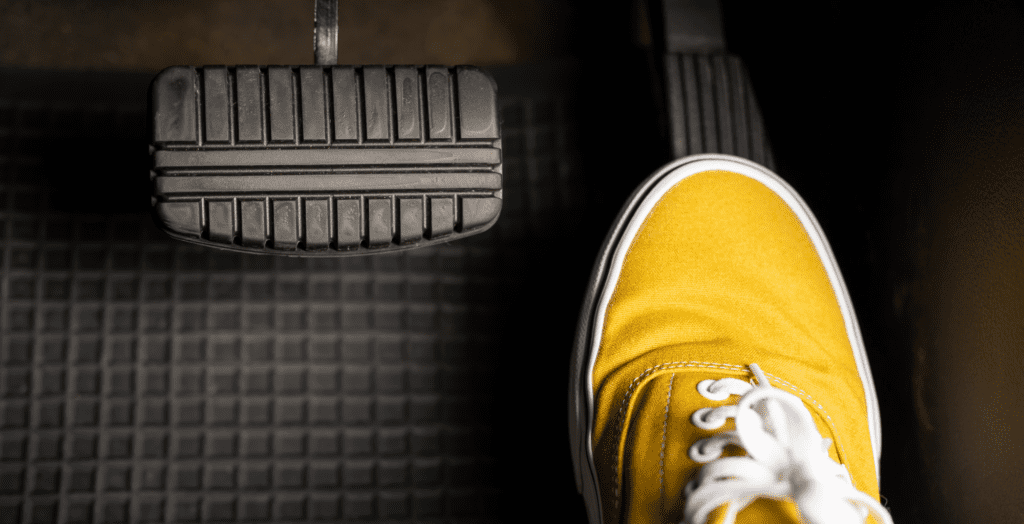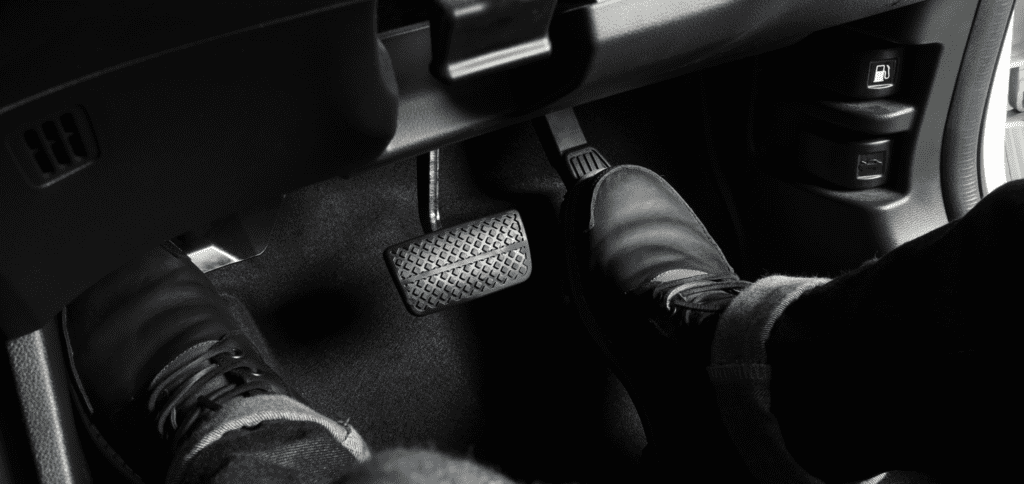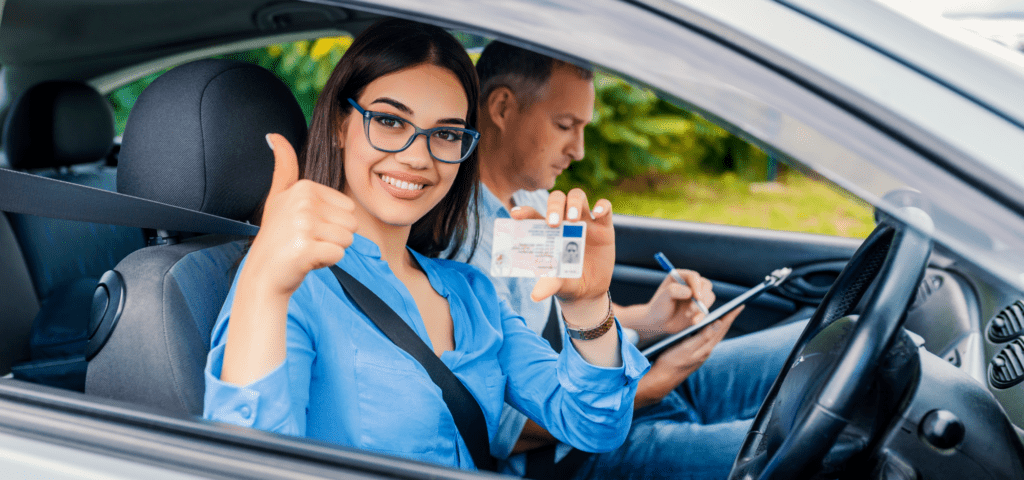
In any vehicle, drivers have access to two distinct braking systems: the foot brake and the handbrake. Understanding when and how to use each of these systems is crucial for safe and effective driving.
Understanding the Foot Brake
The foot brake is the primary braking system used to stop the car during normal driving conditions. It’s operated by pressing down with your foot and is essential for controlling the speed of the vehicle or bringing it to a complete stop quickly and smoothly.
The foot brake works by applying hydraulic pressure to the brake pads, which then clamp onto the wheels’ rotors, slowing down the vehicle.
When to Use the Handbrake
The handbrake, also known as the parking brake, is typically used in specific situations rather than for regular stopping like the foot brake.
Its primary use is to secure the vehicle when parked, ensuring it does not roll away. The handbrake operates mechanically on the rear brakes independent of the vehicle’s hydraulic system, making it a reliable backup for securing the car when stationary.
It is also useful in emergency situations if the main brake system fails or for controlling the vehicle on steep inclines or during certain manoeuvres like hill starts.

Making the Right Choice
The decision between using the foot brake and the handbrake depends on the driving scenario.
- For normal stopping: Always use the foot brake. It provides the control and stopping power needed for everyday driving situations.
- When parked or on a hill: Engage the handbrake to prevent the car from rolling. This is especially important on steep inclines or when the vehicle will be stationary for an extended period.
- In emergencies: If the main braking system fails, the handbrake can be used as a backup to bring the vehicle to a stop, although it should be applied gently to avoid locking the rear wheels and potentially losing control.
Understanding and using both the foot brake and the handbrake appropriately ensures not only your safety but also the safety of your passengers and other road users. It’s about balancing control, safety, and situational awareness to use each brake system as required.
The Foot Brake
Overview
The foot brake is positioned between the clutch pedal (on the left) and the accelerator pedal (on the right). It is the most powerful braking system in a vehicle and is essential for bringing your car to a stop.
Usage
Foot brakes are used far more frequently than the handbrake. Their usage is not limited to stopping the vehicle; they are also crucial for decelerating.
During a drive, you will find yourself lightly pressing on this pedal regularly, even if stopping completely is not the intention.

The Handbrake
Functionality
The handbrake is less powerful compared to the foot brake and cannot bring a car to a halt as swiftly on its own. It specifically controls the rear wheels of a vehicle. It is essential to release the handbrake when starting the car and to apply it when parking.
Proper Use
Using the handbrake while the vehicle is in motion can be harmful to the car. Therefore, it’s crucial to ensure that the handbrake is only used after the foot brake has already been engaged to avoid damage.

Design Evolution
In older vehicles, the handbrake is typically located between the front two seats, designed as a lever with a button at its end. However, in newer vehicles, it is more common to find a handbrake button instead of a lever.
Waiting in Traffic
When to Use the Handbrake
In the common driving situation of queuing in traffic, employing the handbrake is advised whenever the car remains stationary for a significant period. This practice offers a rest for both your foot and the brake pedal.
Deciding to Apply the Handbrake
If you find yourself halted behind other vehicles or at a red light, take a moment to count to 5 seconds. Should it appear that movement won’t resume shortly, it’s appropriate to apply the handbrake.
This action ensures that, once you’re ready to move again, your feet are free to operate the clutch and accelerator pedals.

Brief Stops
Conversely, for very short stops, such as when anticipating traffic lights to change imminently, applying the handbrake is not necessary. Excessive use of the handbrake for every stop could potentially hinder your progress and that of other motorists.
Safety
Dual Braking System
The handbrake serves as an important safety device within your vehicle. The presence of two distinct types of brakes—handbrake and foot brake—ensures that a single failure does not necessarily result in a catastrophic situation.
Although it is highly uncommon for the primary braking system to fail in modern vehicles, having the handbrake as a backup provides a layer of safety.

Emergency Use
It is crucial to understand that using the handbrake to stop a vehicle requires significant skill, especially if the primary braking system fails.
Applying the handbrake while the vehicle is in motion is advised only in emergency situations. This technique can help bring the car to a stop, albeit more slowly, ensuring some level of control is maintained during critical moments.
Protecting Other Drivers
Use of Handbrake at Night
When the handbrake is applied and the foot brake released, your vehicle’s brake lights turn off. This feature is particularly beneficial at night, as illuminated brake lights can dazzle drivers behind you.
Out of courtesy, and to avoid dazzling others, it is common practice to switch to the handbrake when waiting at traffic lights during the night.
Communicating with Other Drivers
However, the absence of brake lights when the handbrake is engaged means other drivers may not realise when you intend to move again.
This is an important consideration, both for your actions and when interpreting the actions of vehicles ahead. Be prepared to move promptly and use other signals, such as indicators, to communicate your intentions to fellow road users clearly.
Driving Test Tip
During a driving test, for safety reasons, examiners expect candidates to apply the handbrake after performing an emergency stop or if the car stalls.
This should be done immediately after the vehicle has come to a stop using the foot brake, indicating the vehicle is securely stationary.
Control
Enhancing Vehicle Control
The handbrake offers drivers an effective means to enhance control over their vehicle. By fully engaging the foot brake, applying the handbrake, and then releasing the foot brake, drivers can take a moment to regroup and prepare to resume driving in a more controlled manner.
Hill Starts
Hill starts are significantly easier with the use of the handbrake. It prevents the car from rolling either forwards or backwards, maintaining the vehicle’s position on an incline. However, when facing downhill on a steep road, it’s advisable to also keep your foot on the brake pedal for added security.
For uphill starts, the handbrake’s engagement allows drivers to freely operate the clutch and accelerator pedals simultaneously, which is crucial for moving forward effectively.

Parking
Applying the handbrake is a must when parking to ensure the car remains stationary. Despite its reliability, it’s worth noting that handbrakes can fail more often than foot brakes.
To further secure the vehicle when parked, especially if the handbrake fails, leaving the car in gear is recommended. Use first gear when facing uphill and reverse gear when downhill, providing an additional safeguard against rolling.
Driving Test Tip
During a driving test, examiners look for your ability to maintain control of the vehicle, and judicious use of the handbrake contributes to this. They expect the handbrake to be applied whenever the car stops at the roadside.
Furthermore, if you encounter difficulties during a manoeuvre, employing the handbrake can afford you a moment to adjust and better manage the foot pedals.
Using the Handbrake and Foot Brake Together
Enhanced Vehicle Control
The handbrake offers drivers an effective method for enhancing control over their vehicle. By fully pressing the brake pedal, applying the handbrake, and then releasing the brake pedal, drivers can pause, regroup, and proceed in a more controlled manner.
Hill Starts
For hill starts, the handbrake proves invaluable. It prevents the car from rolling, ensuring stability. However, on steep downhill gradients, it’s advisable to also keep your foot on the brake pedal for added safety.
Utilising the handbrake during uphill starts frees your feet, allowing for simultaneous use of the clutch and accelerator pedals, which is crucial for a smooth departure.
Parking
Always engage the handbrake when parking to keep the vehicle stationary. Despite its reliability, the handbrake is more prone to failure than the foot brake.
To mitigate this risk, leave the car in gear — first gear for uphill and reverse for downhill parking. This provides an additional safeguard against rolling should the handbrake fail.
Driving Test Tip
During a driving test, demonstrating control through appropriate handbrake use is key. Examiners expect the handbrake to be applied whenever the car stops by the roadside.
Additionally, employing the handbrake can assist in regaining control during challenging manoeuvres, offering a moment to adjust and accurately use the foot pedals.
Integrating the handbrake with the foot brake in various driving scenarios enhances safety, control, and comfort, making it an essential skill for all drivers.


